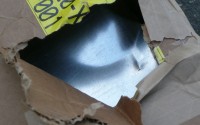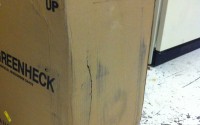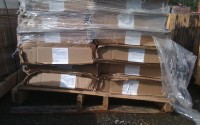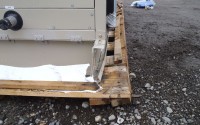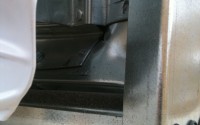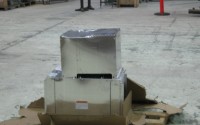Freight Claims – Lost, Misplaced, Missing, Stolen, or Damaged Freight
One of the realities of shipping to Alaska is the high incidence of freight damage. Although most of the equipment we order is legally your property once it ships, it is our policy at Stinebaugh & Company to assist you with the filing of freight claims when damage occurs. Hopefully, this document will help clarify some of the idiosyncrasies with freight and freight claims.
All factories (including those of our competitors) ship their products “F.O.B. (freight on board) Shipping Point,” “F.O.B. Factory,” or some other similar term. “F.O.B.” has nothing to do with who pays the freight! It is a legal term used to signify who is legally responsible for the merchandise while it is in transit. When the equipment is quoted, “F.O.B. Factory, Freight Collect,” or, as a courtesy to you, “F.O.B. Factory, Freight Prepaid,” the responsibility for damage does not shift away from the carrier, or from you, the purchaser of the equipment.
When the manufacturer completes production and the shipment is loaded on to the freight carrier’s truck, the carrier then accepts the freight and signs for it as:
- Being undamaged
- Having a specific carton count (number of pieces)
- Packaged properly
At this point, the manufacturer’s responsibility ends, and the carrier’s responsibility begins. It is then the carrier’s responsibility to deliver the freight:
- Undamaged
- With the piece count as listed on the Bill of Lading
When the carrier pulls up to the dock of your freight forwarder, it is then the forwarder’s responsibility to:
- Check the cartons immediately for any obvious damage
- Verify the correct number of cartons or piece count
If, in the event that something is incorrect, it is the forwarder’s responsibility to:
- Confirm the problem, in writing, on the Bill of Lading, and
- Immediately notify the carrier, in writing, of the problem.
Please note: The freight carriers and forwarders may devise many reasons why they are not responsible for your damaged freight. However, the fact of the matter is, if they accepted your shipment (from the point of origin) as undamaged, with the correct count and in correct cartons, it is their responsibility to deliver it to you in the same manner.
When the freight arrives at your door, it is your responsibility to check for obvious damage or missing items. As of April 18, 2015, you have five (5) days to open your cartons and check for either:
- Concealed damage
- Missing or incorrect items
When receiving a shipment that is damaged, improperly packaged, or has an incorrect carton count, as the owner of the freight, you must then decide whether to:
- Accept the shipment, as is, and fix what is broken or fabricate what is missing, then file a freight claim to recover your incurred costs, or;
- Accept the shipment, as is, and reorder the missing or damaged freight, and file a freight claim to collect your money for the re-ordered portion of your shipment. In either case, we strongly advise taking photos (date stamp the photos) of cartons and contents, and count cartons carefully checking that each carton is addressed to YOU.
- Or, refuse the shipment.
Concealed damage is the responsibility of either the carrier or the freight forwarder, and you must immediately notify them (the delivering carrier) in writing, in detail, of any damage. Once again, we suggest taking photos (date stamped) of both the cartons and the damaged equipment.
If the shipper ships you twenty (20) cartons, and you receive twenty (20) undamaged cartons, and you sign for them as “OK”, only to find out three months later that four (4) of the cartons belong to someone else; and you are indeed missing four (4) cartons of your own merchandise, well… guess who is then responsible? Please make certain that all boxes and merchandise received is addressed to you. When you sign for a shipment, you have legally accepted the shipment, and any replacement cost will be your responsibility.
Also, no freight carrier will accept a product unless it is properly packaged. If you receive a shipment that is not packaged (crated or cartoned) and rolling around loose in the bottom of the truck, you can bet that something is either missing or damaged, and you should either:
- Refuse the shipment, or
- Inventory the shipment, piece by piece, and list each item on the Bill of Lading, or
- Before you accept this shipment, call the sales associate that sold you the material and have them read you an itemized packing list of merchandise ordered, so you can compare their list to what is being delivered to you.
To avoid freight problems, it is imperative that everyone in your organization that is accepting freight shipments, understand these issues.
Filing Freight Claims can be a very difficult, time-consuming, job-delaying and frustrating process. We hope this information proves useful to you in clarifying some of those mysterious ‘gray areas’ of liability and responsibility, and serves to simplify the filing process of any future freight claims.
Below are examples of documented freight damage:
